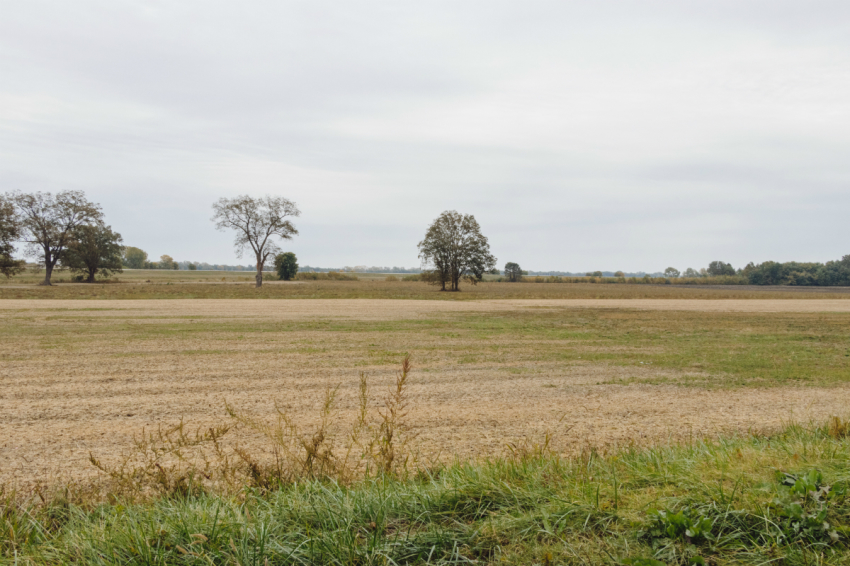Postcard from Ste. Genevieve, Missouri’s historic French colonial town

Ste. Genevieve is more than just a quaint Midwest town reminiscent of the TV series “Mayberry.”
It is the oldest continuously inhabited settlement in Missouri, which means it dates to the middle of the 18th-century during the epic Anglo-French fight for colonial domination of North America.
Ste. Genevieve — the French spelling should be an obvious indicator that this was once part of New France — is also one of the few places outside of the original 13 colonies with a history contemporary to that of the American Revolution.
The exact date of its founding has been debated by historians. In fact, different sources and guides cite different years, though everyone seems to agree that the French migrated from their colonial outpost just across the Mississippi River, in present-day Illinois, at some point between the 1730s and 1750s. However, the first Frenchmen in these parts were the great 17th-century explorers, adventurers and Roman Catholic missionaries, including none other than Jacques Marquette himself.
The original settlement of Ste. Genevieve was located a couple of miles away from today’s Ste. Genevieve until a devastating Mississippi River flood in the 1780s forced a rebuilding on higher ground.
Much of that French colonial character was retained over the ensuing centuries, though sadly some of it was lost as Ste. Genevieve does have some truly repugnant 20th-century architecture within a stone’s throw of historic buildings.
Still, the number of surviving examples of French colonial architecture — some were actually built either during the Spanish period from 1763 until 1801 or in the years around the Louisiana Purchase, when the United States gained control — is impressive. It is also why the town contains one of the country’s newest national parks, the aptly named Ste. Genevieve National Historical Park.
The National Park Service is moving full steam ahead after Congress gave its official authorization last year. However, a new park doesn’t just open overnight. It takes considerable time to do the historic preservation and build an interpretative component. So, it could be a couple of years before everything is set for an official opening.

What to see and do
Towering over the charming downtown, as well as the historic district that surrounds it, are two 19th-century edifices with each belonging to competing authorities.
The county courthouse is home to the secular, temporal authorities that form the civil government. Yet, it pales in comparison to the Roman Catholic parish church situated directly across from it. The brick Gothic Revival church, which rivals some cathedrals in size and interior grandeur, has claimed spiritual authority over Ste. Genevieve since the first church, a much simpler log edifice, was built in the 1750s.
A short walk away is the Centre for French Colonial Life. Here you will learn the largely untaught colonial-era history of not just Ste. Genevieve but also the Mississippi River Valley under the French, Spanish and American flags. Exhibits include artifacts and even period homes. Among the collection of homes is the late 18th-century Louis Bolduc House, a surviving example of the posts-on-sill construction method that was used throughout France’s colonial possessions in North America.
Another excellent example is the Bequette Ribault House. Masterfully restored by Hank Johnson, owner of Chaumette Vineyards & Winery, it was built a few years after the Louisiana Purchase, when French was still the lingua franca of Ste. Genevieve, using a different method of construction called post-in-ground. Only four other examples of this method survive anywhere in the country and two of them are in Ste. Genevieve.
Maybe a hundred yards away is the Beauvais–Amoureux House, which is staffed by a park ranger and features exhibits on just how the houses with their French colonial vernacular architecture were built. Across the street is a vast field, literally called the big field by the French, that has been farmed by locals for centuries.
All of these sights are open to visitors, though opening hours are somewhat limited or nonexistent after November without a scheduled appointment. While I generally avoid guided tours this is one of those situations when booking a tour through the local tourism office makes sense.

Where to stay and eat
I stayed at Hotel Audubon, a family-run hotel in the heart of downtown. It has the warmth and genuine hospitality of a bed-and-breakfast inn with some of the comforts of a hotel, not least well-appointed rooms.
At breakfast skip the hotel’s small continental offering, which is included with rooms, and instead walk down Main Street to locally owned Beanik Cafe and Pastry. Open from 6 a.m., the pour-over coffee is excellent.
For dinner, try either the hotel restaurant or drive about 30 minutes to Chaumette Vineyards & Winery, one of several local Missouri wineries. The Grapevine Grill is housed in a beautiful colonial-style building that comes with sweeping views of the rolling hills that surround the winery. Of course, dining here means you can also taste the wines.
Ste. Genevieve is about an hour by car from St. Louis, the closest major airport. If you have the time avoid the interstate and instead drive on two-lane roads through small-town Missouri.
Spires and Crosses, a weekly travel column exclusive to The Christian Post, covers old churches, history and heritage, architecture, culture and art. Follow @dennislennox on Twitter and Instagram.



























